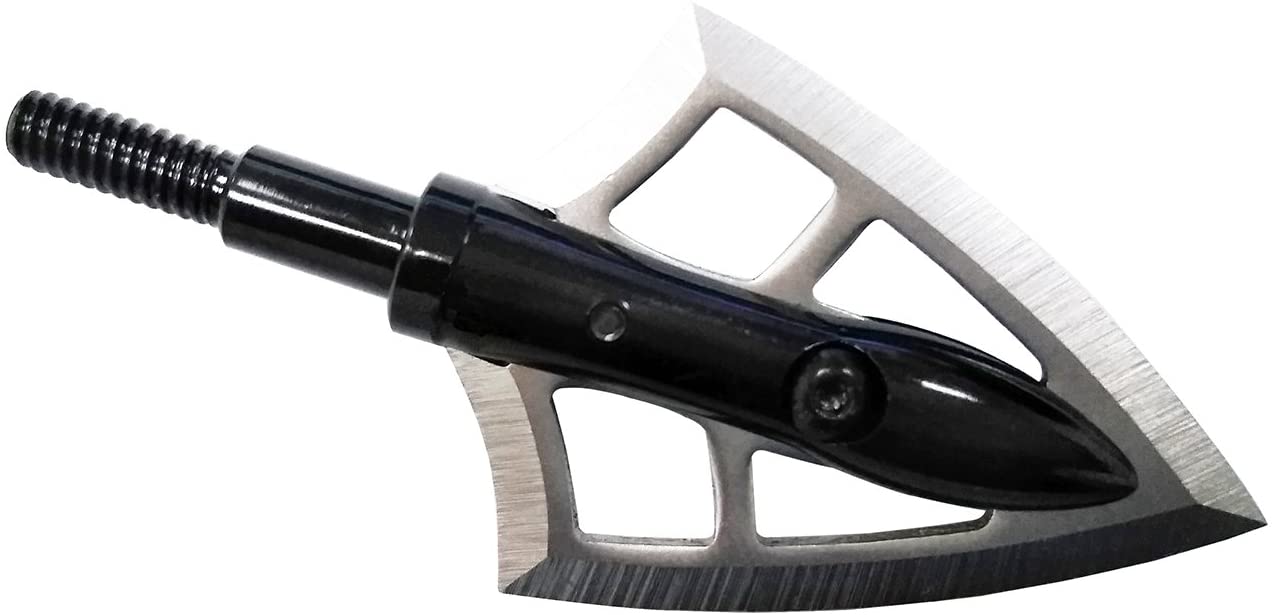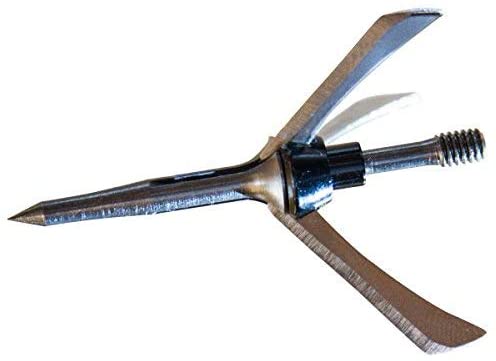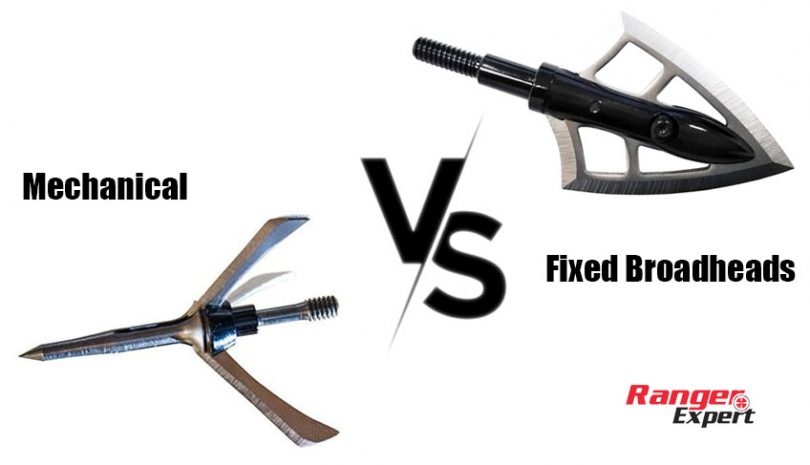Whether you are just looking to take up bow hunting or have been in the game long, the debate over which kind of broadhead is best is always a hot topic and a hard decision to make.
The “Mechanical vs Fixed Broadheads debate” isn’t something new. The discussion has been brewing for ages, and any clear answer has yet to be found. Well, until now, that is.
Whether you hunt with a compound bow or a crossbow, you want what every bowhunter wants: accuracy, reliability, penetration, a through-and-through shot, and of course, good blood trails!
So which broadhead type gives you all of this?
Let’s break it down and compare mechanical vs fixed broadheads so your decision can be much easier to make! Here goes:
Mechanical vs Fixed Broadheads: Key Differences
Fixed Broadheads

A fixed broadhead has no moving pieces, simply a fixed blade. What you see is what you get. Some variants and hybrids offer expandable blade features, but that’s a separate issue altogether!
Fixed broadheads range in blade number from 2 – 6 and generally have a smaller cutting diameter that makes a smaller hole.
The pros
The lack of moving parts mitigates the risk of malfunctions or opening failures. They have been around for a long time and are still popular today because of their reliability.
The smaller diameter makes a through-and-through shot easier to attain, so in essence, penetration is better.
The smaller diameter also means you require less energy to perform the same cutting task and thus can shoot with lower bow poundage. That way, you won’t have to worry that the lack of power will affect the shot negatively.
Another true advantage to these arrows is their pocket impact.
These heads are invariably cheaper to buy than the mechanical options, and because they’re sturdy, they don’t need to be replaced frequently, making them a money-saver of an option.
They are also much easier to maintain and sharpen due to the lack of moving pieces. Another big pro for the fixed broadhead is its structural strength.
Because they are fixed and welded in most cases, they are durable and can take the beating of hitting a deer’s shoulder blade better than a mechanical head would.
The cons
The biggest drawback of the fixed broadhead is its deviation issues. Fixed heads are great at catching a breeze which is obviously an undesirable characteristic for an arrow.
The higher your poundage, the faster the arrow flies. The faster the arrow flies, the more it deviates and becomes inaccurate if a fixed broadhead is attached.
There are measures and counters for this, but they are generally less accurate than mechanical broadheads.
Another downside to these arrowheads is a lack of choice concerning diameter. The broadest fixed broadheads don’t even come close to the mechanical alternatives.
So if you prefer to punch a big fat hole in your target, the choice isn’t really there with fixed heads.
Mechanical broadheads

Mechanical broadheads have expandable blades that open up nice and wide on impact.
Their purpose is supreme cutting, to produce more bleeding, and to fly more accurately. They range in blade numbers from 2 to 6 and come in many designs, shapes, and setups.
They deliver the best result if associated with top-class archery arrows.
The pros
Mechanical heads are indeed the most accurate of all the options. They suffer far less deviation because most of the blade span area that would catch the wind is tucked away until impact.
This allows for faster shooting at higher speeds with less concern over whether your arrow will hit its mark.
Another big pro for this type is the options that come along with them, versatility. You have various blade diameters, shapes, grains, and directions to choose from. So there’s an option for everyone.
The second biggest reason people buy mechanical broadheads is their supreme cutting capabilities.
They cut more and in more directions and cause more bleeding, resulting in a wider blood trail.
This, however, happens if you can penetrate properly. Reliably achieving this often calls for heavy poundage of bow to be used.
The cons
The biggest downside to the mechanical broadhead is its possible failure to deploy on impact!
There have been many accounts of these broadheads not opening up the deployable blades when the arrow hits the target.
When this happens, it will act like a field-tipped arrow and produce minimal cutting with minor bleeding and a poor trail to track.
The other significant downside is their structural integrity.
They cannot match the strength of a fixed head and often break or bend due to the presence of moving pieces.
Yet another downer is the cost. Mechanical broadheads are more expensive and require blade replacements that add up after a while.
Also, mechanical broadheads may not be your thing if you prefer light poundage bows, as these broadheads work better with heavier poundage bows.
Broadheads Fixed or Mechanical for Bowhunting– According to Data
Statistical data on compound bow hunters using mechanical and fixed broadheads shows that the recovery rate of game shots is only a few percent higher with mechanical broadheads.
These same hunters only hit their target a few percent more of the time on average than fixed blade users.
The data clearly shows that there is no truly significant difference between the two at close to medium ranges!
Do We have a Winner?
In my opinion? No.
The fact that each arrowhead type has convincing pros and cons and the statistical data showing negligible performance difference means there is no real winner in this “fixed blade vs mechanical” debate. It all comes down to preference that gets developed through experience and exposure.
Which you pick should be determined by what you are hunting, what distance you plan to fire from, what bow you are using, and what kind of cut you want to make.
Try out different types of broadheads on practice targets as well as in the field to find the one most compatible to you. Also, proper maintenance is crucial if you want your broadheads to perform optimally.
Vary your shot distance too. Soon you will figure out what produces the most desirable outcome for you. And then you’ll be finally ready to embrace your version of the winner in the fixed vs mechanical broadheads comparison.
I hope this has been helpful. Stay safe, and happy hunting!
FAQs
Do Mechanical Broadheads Need To Be Tuned?
Yes, mechanical broadheads need to be tuned. Just like fixed-blade broadheads, they are designed to cut through hide and bone but may need a bit of help to ensure that their blades open correctly and consistently with each shot.
Can Compound Bow Broadheads Be Reused?
Yes, compound bow broadheads can be reused. However, if there is any damage to the blades or axles, replacing them will be the best decision. Check before you reuse your broadheads.
What Angle Do You Sharpen Broadheads?
Broadheads should generally be sharpened at a 24 to 28° angle. This will provide the blade with an edge that is sharp enough for cutting through hide and bone but still maintains its strength and durability.








Leave a Comment